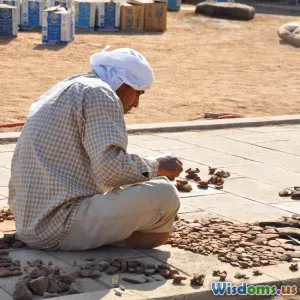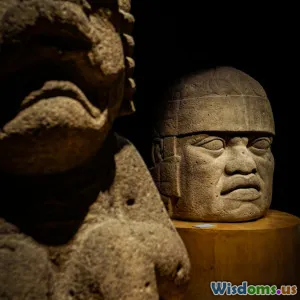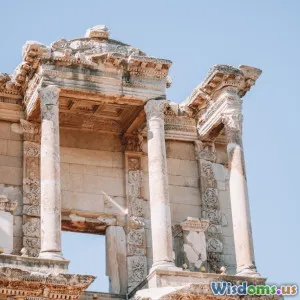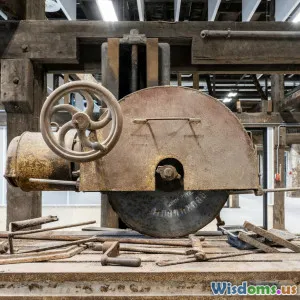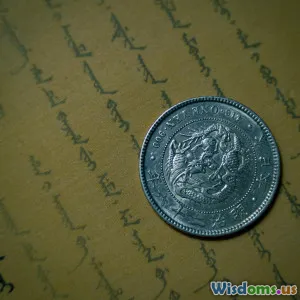
Trade and Economy in Ancient Societies
7 min read Explore the pivotal role of trade and economy in shaping ancient societies and uncover the mysteries behind their economic prowess. (0 Reviews)
Trade and Economy in Ancient Societies
Introduction
From the bustling markets of Mesopotamia to the intricate trade networks of the Indus Valley, ancient societies laid the foundation for the complex global economies we know today. Trade was more than just exchange; it was a driving force that shaped political power, social structures, and cultural evolution. Understanding the dynamics of trade and economy in ancient civilizations unlocks insights into their successes, challenges, and lasting legacies. This article explores the intricate mechanisms of ancient economies, revealing archaeological clues and historic facts that illuminate how commerce connected diverse worlds and propelled societies forward.
The Backbone of Civilization: Economic Systems in Antiquity
Ancient economies were multifaceted systems often rooted in agriculture but greatly enhanced by trade and craftsmanship. Unlike modern monetary systems, many of these economies combined barter, gift exchange, and early forms of currency.
Agricultural Base and Surplus Production
The rise of agriculture created food surpluses, freeing portions of the population to engage in specialized crafts and trade. For example, Ancient Egypt's fertile Nile Delta provided abundant grain, enabling urbanization and a class of artisans who manufactured goods for trade.
Early Currency and Value Systems
While barter dominated, several ancient societies developed proto-money. The Mesopotamians used silver rings and barley as measures of value, while the Lydians in modern-day Turkey are credited with inventing the first coinage around 700 BCE. Coins standardized trade and expanded long-distance commerce by simplifying transactions and storing wealth securely.
Trade Networks: Connecting Continents
Ancient trade was far-reaching, establishing networks that linked distant communities across continents.
The Silk Road: A Commercial Superhighway
One of the most famous examples is the Silk Road, a sprawling network active from around 130 BCE. It connected China, India, the Middle East, and Europe, facilitating not just the exchange of silk but also spices, precious metals, ideas, and technology. Archaeological finds of Roman glassware in China and Chinese silk in Roman territories attest to vibrant intercontinental exchanges.
Maritime Trade in the Mediterranean and Beyond
The ancient Phoenicians mastered seafaring, establishing trade colonies across the Mediterranean, including Carthage. Their lucrative trade involved timber, purple dye, glassware, and metals. Similarly, the Minoans of Crete controlled crucial sea routes around 2000 BCE, exporting pottery and olive oil.
Trans-Saharan and Indian Ocean Trade Routes
The wealth of African kingdoms like Ghana and Mali was linked to trans-Saharan trade routes that transported gold and salt. In East Africa, the Swahili Coast thrived on Indian Ocean trade, exporting ivory and textiles to Arabia, Persia, and even India.
Economic Institutions and Social Implications
Trade not only generated wealth but also influenced political power and societal structures.
Markets and Craft Guilds
In Mesopotamia, temple complexes acted as economic hubs, controlling land, production, and distribution. The emergence of marketplaces as distinct soon followed. Craft guilds in societies such as Ancient Greece ensured quality control, protected trade secrets, and maintained economic stability.
Empires and Economic Control
Empire-building often aimed at controlling trade routes and resources. The Persian Empire regulated commerce along the Royal Road, introducing standardized weights, measures, and postal systems to facilitate trade. Roman control over roads, ports, and currency unified an enormous economic system, promoting internal trade and wealth accumulation.
Archaeological Discoveries: Clues to Ancient Economies
Archaeology provides vital evidence of trade and economic practices.
Seals, Tablets, and Ledgers
Cuneiform tablets from Mesopotamia reveal intricate accounting systems and commodity lists. The Indus Valley seals suggest merchant networks though their script remains undeciphered.
Shipwrecks and Artifacts
The Uluburun shipwreck off Turkey’s coast (circa 1300 BCE) contained copper ingots, luxury items, and raw materials from different regions, showcasing the complexity of Bronze Age trade.
Urban Layout and Infrastructure
The planning of trade hubs — including granaries, docks, and market places — reflects economic organization. For instance, Mohenjo-Daro's well-laid urban structure hints at effective economic control.
The Legacy of Ancient Trade and Economy
Ancient economic systems laid the conceptual groundwork for future financial and trade models. By facilitating cultural exchange and technological diffusion, trade networks were catalysts for human progress. As archaeologist Paul Yule succinctly noted, “Understanding these trade systems is not just about economics; it reveals the interconnectedness of ancient peoples.”
Conclusion
Trade and economy were the lifeblood of ancient societies, crucial to their emergence and endurance. Far from isolated, these civilizations thrived on exchange—be it goods, ideas, or culture. The archaeological mysteries surrounding their trade illustrate a world of dynamic interaction and innovation. Studying them broadens our appreciation for human ingenuity and the shared threads woven through our collective past. As modern societies continue to wrestle with complex economic challenges, the lessons of ancient trade—adaptability, connectivity, and cooperation—remain strikingly relevant.
References:
- Earle, Timothy. "How Chiefs Come to Power: The Political Economy in Prehistory." Stanford University Press, 1997.
- McIntosh, Jane. "The Ancient Indus Valley: New Perspectives." ABC-CLIO, 2008.
- Hirth, Kenneth. "The Silk Road Connecting the Ancient World through Trade." Asia Major, 2009.
- Yule, Paul. "Archaeology of the Persian Empire." University of Chicago Press, 2013.
- Casson, Lionel. "The Ancient Mariners: Seafarers and Sea Fighters of the Mediterranean in Ancient Times." Princeton University Press, 1989.
Rate the Post
User Reviews
Popular Posts












